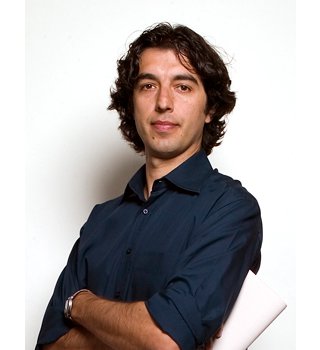This Italian-born professor has been researching calorie restriction and fasting in the USA for decades as an intervention in aging processes at the cellular level and as a remedy for various diseases. He developed the fasting micking diet as an alternative to the difficult 72-hour water fast. A diet that is easier to apply, to which physicians have less resistance and thus accessible to more patients. A small-scale study was done with ms patients with very nice results. I understand that a large study is now being started in the Netherlands as well. Valter Longo is working closely with, among others, Prof. Hanno Pijl of LUMC in Leiden.
Several studies have been ongoing for years. Diseases under the microscope include MS, Parkinson's, alzheimer's, rheumatism, fibromyalgia, diabetes, and various cancers. With the exception of ms, the results have not yet been published but are very promising. Brief summary of the research in ms: The ms patients follow a fasting mimicking diet of three days a week over a duration of three months. The study shows increased production of myelin and an increase in the number of healthy cells (white blood bodies). The improvements are associated with increased corticosterone levels and T cells combined with lower levels of pro-inflammatory cells. In parallel with fasting, the ketogenic diet is being investigated. Both are effective but the FMD shows more improvements. The study reports that both diets are safe to do under supervision. The good results of these initial studies have made it possible to expand the studies. Perhaps in the near future this diet could be prescribed by your doctor as a treatment method for ms. However, it is not that far off yet.
Stem cells are much discussed in relation to ms. They are cells that are diseased and damaged in ms patients. Stem cells are very important in keeping your body functioning and healthy they can multiply themselves and form new tissue cells such as brain cells, blood cells, muscle cells, etc. Therefore, our stem cells also offer the ability to restore the immune system and repair damage done by diseases such as ms. You have probably read about stem cell therapy. A difficult and not without risk but hopeful treatment that is not yet performed in the Netherlands. You can be cured of ms thanks to stem cell therapy. More and more of our fellow sufferers travel to Sweden and Russia to undergo this very expensive treatment at their own expense. Stem cells play an important role in recovery from ms. Unlike stem cell therapy where stem cells are replaced, there are ways to promote stem cell recovery and this can be done by fasting.
(STEM) CELL REGENERATION THROUGH FASTING AND FASTING MIMICKING DIET
Professor Valter Longo talks about Stem Cell Regeneration in his interviews. He indicates that with periodic fasting and MFD you can influence the health of your cells and stem cells in particular. This would involve a 5-day cycle of FMD to achieve the same effect as a 73-hour water fast. But what exactly happens to the cells? The white blood cells (T cells) in ms (and several autoimmune diseases) are responsible for the challenged auto immune responses due to a defect. In ms, the immune system reacts disturbed by attacking the body's own cells. Now comes the!!!! During fasting, the body clears about 40% of these diseased white blood cells (T-cells). During a fast period of at least 72 hours (120 hours FMD), it appears that
stem cell regenerationalso
occurs. The stem cells come into action, renew themselves and/or ensure that the cleared cells are replaced during the re-feed. This not only improves health and reduces immune responses to various conditions but also rejuvenates your cells. Partly because of this, it seems possible not only to extend life span but also to delay the deterioration of our systems and thus stay healthier until the end of our lives.
REBUILDING WITH THE RE-FEED
After fasting, rebuilding of the broken down cells begins. Rebuilding starts as soon as you start eating again. Eating again (re-feed) is perhaps the most important part of the FMD cycle. The discarded old, diseased, broken cells are now replaced for healthy new cells! The fasting is just the means that takes care of the breakdown and thereby enables the rebuilding of healthy cells. In the studies, the re-feed and the follow-up diet consists of the Mediterranean diet or the longevity diet. It is good to relieve the liver after the fasting period or FMD and put it to work in a dosed manner. First day still no animal protein and do not overeat.
THE FASTING MIMICKING DIET.
So FMD is a method that mimics long-term periodic fasting of several days. The advantage of this mimick (pretend) is that you do get to eat restricted foods. For the duration of the diet, following a pattern of reduced calorie intake, you eat up to 30% of your normal daily kcal with a maximum of 725 kcal. In the studies, the number of daily kcal is determined by your body weight in kg x 8.6 (equals pounds x 4kcal) It is important to minimize protein, by eating only plant-based foods. Only then will your cells start recycling. This way your body experiences the benefits of a 73-hour water fast, while still being allowed to eat something. The fast lasts for 5 days (120 hours)
THE FIGURES OF FMD :
Day 1: (transition day) 50% of your calorie intake max 1090kcal. 10% protein (27 grams) 56% fat (68 grams) 34% carbs (93 grams).... Days 2 through 5: 30% of your calorie intake, max of 725kcal. 9% protein (16 grams) (research uses 5%) 44% fat (35 grams) (research uses 60%) 47% carbs (85 grams). (research uses 35%) Stay as low in protein as possible and get it only from plant sources so vegetables (no meat, egg, fish, dairy). That way you can easily get the carbs and not go over that (no fruit, except maybe some berries).
HOW AM I GOING TO FEEL DURING FASTING?
What you can expect is to go into ketosis on day two where your body will detox. As a result, you may experience headaches, nausea and fatigue (ketosis flu). It is then important to replenish your minerals by taking plenty of salts (dissolve a bit of Celtic sea salt in your water=sole) and magnesium. The second day is known as the hardest day. After the second day it will get easier and hunger will decrease. Very important is to drink well at least two liters a day to get the waste products out of the body quickly. How people feel during fasting varies. Everything between fit and lousy occurs. Good to know is that cell breakdown and regeneration can be accompanied by a slight increase in body temperature. Fasting is something your body has to get used to it may be that the first time you stop after three days, no problem do a good re/feed. wait a few weeks and try again. Because if it doesn't go so well the first time, rest assured experienced fasters will go better and easier every next cycle.
CAN ANYONE DO THIS?
NO! fasting longer than 24 hours in any form is not allowed without the guidance of a doctor or expert. People who are underweight or on medication such as diabetes should be extra vigilant and be careful when fasting and certainly not do it on their own. Whether you can handle it is personal and depends on factors such as: how fit are you, what is your motivation, how is your condition, do you have experience with fasting, etc.? Above all, it remains your own choice and responsibility. Valter Longo says the following when asked if you should adopt the method now: if your ms allows you to wait, wait until the fasting mimicking diet is registered as a treatment. If you cannot wait then go and find a doctor who can help and monitor you in this regard.
FASTING MIMICKING DIET
There are
ready-made packages for sale to do 5 days of FMD. Other options are two avocados and a greenpowder supplement (drink). You can also do it with fresh ingredients. With
www.myfitnesspal.com you can start calculating a menu. As it turns out, it is not easy to stay within the protein allowance. It is therefore quite a puzzle to arrive at the green soup recipe and achieve the highest possible nutritional value. You can use the green soup with dinner for all 5 days. For breakfast you can take bulletproof coffee as a base initially but if your ketones get too high you can take it in vegetables instead of the fats in the coffee. Lunch is a vegetable soup based on mixed stir-fry vegetables. The advantage of mixed vegetables is that you get a wide variety of nutrients and can also expect a more consistent protein intake which in turn lowers the risk of too much protein. Easy about a set menu is that you can prepare the whole thing ahead of time and freeze it in portions. Nothing is said about supplements by Valter Longo but good advice from a doctor or expert therapist is definitely recommended.
MENU DAY 1
kcal carb. fats protein Breakfast 2 cup coffee 0 0 0 0 coconut oil 135 0 15 0 grass-fed butter 75 0 8 0 subtotal 210 23Lunch Sambal oelek 10gr 5 1 0 0 Vegetable broth z.yeast (Rapunzel) 300ml 18 1 1 0 Olive oil 10gr 90 0 10 0 Stir-fried vegetables Italian ah 100gr 31 5 0 1 Stir-fried vegetables Mushrooms ah 100gr 33 5 0 2 subtotal 177 12 11 3Dinner Green soup 1 serving 150 12 8 7 Blueberry Frozen, 50gr 22 4 0 0 subtotal 172 16 8 7Day total 559 28 42 10
MENU DAY 2 TO 5
kcal carb. fats protein Breakfast 2 cup coffee 0 0 0 0 0 Coconut oil 10gr 90 0 10 0 stir-fried vegetables Ah Dutch 200g 54 7 0 2 Provencal herbs tl 3 0 0 1 Blueberry Frozen, 50gr 22 4 0 0 subtotal 169 11 10 3Lunch Sambal oelek 10gr 5 1 0 0 Vegetable broth z.yeast (Rapunzel) 300ml 18 1 1 0 Olive oil 10gr 90 0 10 0 Stir-fried vegetables Italian ah 100gr 31 5 0 1 Stir-fried vegetables Mushrooms ah 100gr 33 5 0 2 subtotal 177 12 11 3Dinner Green soup 1 serving 150 12 8 7 Blueberry Frozen, 50gr 22 4 0 0 subtotal 172 16 8 7Daily total 518 39 29 13RECEPT GREEN SOEP for 6 servings a 150 kcal 600 gr, Broccoli in florets 200 gr, Fresh Kale 200 gr, Spinach 300 gr. Celery 200 gr Onion 3 st garlic For 1500 ml, Clear Broth Powder Without Yeast (Rapunzel) Salt Pepper to taste 25 grams, Ginger 25 Gr., Red Peppers 5 grams, Provencal Spices 36 g, Coconut oil All ingredients stir-fry and cook in the broth then blend. Note add broth powder for 1.5 liters and 1 liter of water. While blending, add more liquid if necessary. sources: https://www.google.com/patents/US20150004280 https://www.nationaalmsfonds.nl/onderzoek/veelbesproken-onderzoeken/stamcelonderzoek


